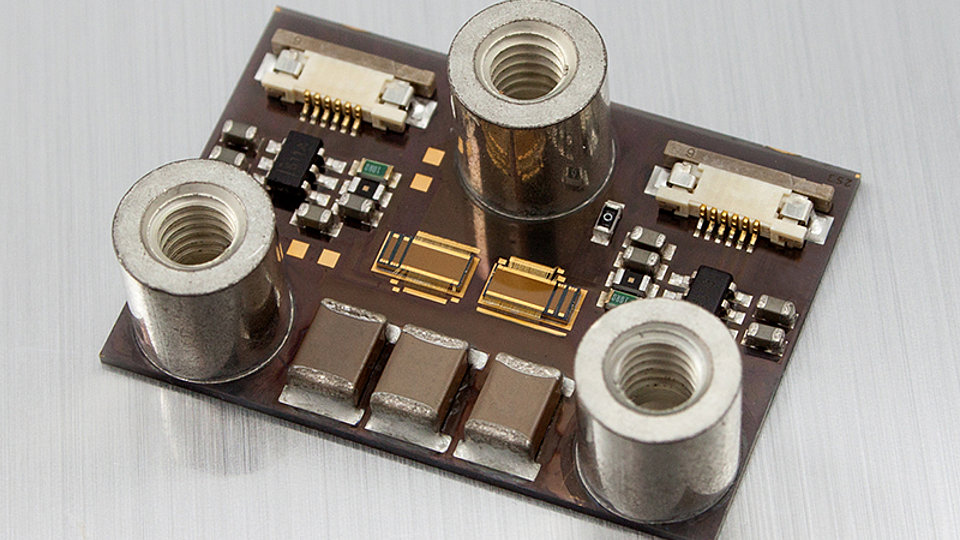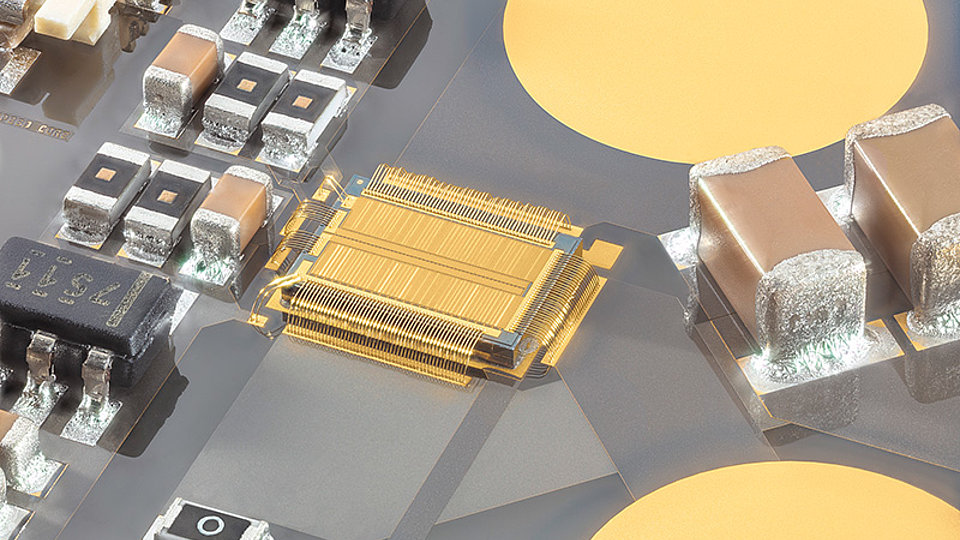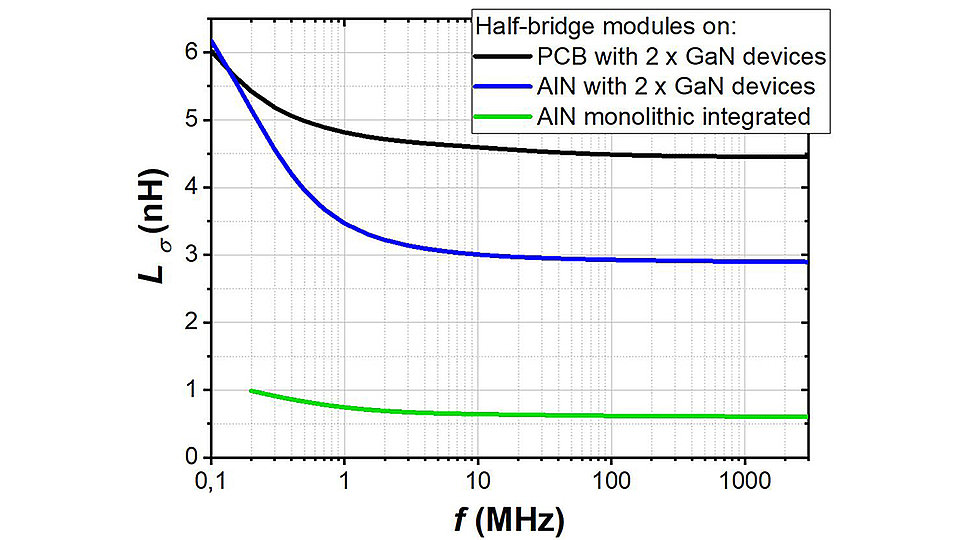AlN low-inductance high-speed cores – enabling high-speed power electronics
Fig. 1: 600 V/10 A half-bridge module with two 170 mΩ GaN transistor chips, two gate drivers and a fraction of the DC-link capacitors.
Fig. 2: Monolithically integrated 600 V/170 mΩ GaN half-bridge mounted on the AlN-based high-speed core.
State-of-the art GaN power electronic circuits are either electrically limited, as fast switching demands minimized parasitic circuit elements, or thermally limited due to highly concentrated loss generation. The development of low-inductance switching and low-thermal impedance environments is one key parameter to enable and take advantage of the inherent benefits of GaN switching devices.
FBH’s GaN-based 650 V switching transistors feature a particularly low gate charge and a low output capacitance that may result in 400 V switching transients of down to 200 V/ns slew rate. Fast switching transients and small device capacitances aggravate the impact of the test-board layout and design with respect to minimizing parasitic circuit elements. Using FBH’s front- and back-end capabilities, dedicated low-inductance high-speed modules have been developed. Fig. 1 shows a hybrid integrated GaN-based half-bridge featuring two 600 V / 170 mΩ GaN HEMTs together with the gate drive circuitry on a two-layer pre-patterned insulating aluminum nitride (AlN) substrate [1]. Employing FBH’s mature p-GaN technology, monolithic integrated half-bridges have been fabricated. In a similar manner, integrating the driver circuitry on AlN, high-speed modules targeting further enhanced switching capabilities have been assembled (Fig. 2).
The AlN high-speed modules performance was quantified by simulating the parasitic stray inductance of the commutation loop, an essential parameter which affects transient turn-off voltage overshoot, the switching losses as well as the stability of the switching transitions. In comparison with a conventional PCB GaN half-bridge setup, the AlN modules feature a notable lower commutation loop inductance (Fig. 3). Additionally, because of AlN’s high thermal conductivity (170 W/mK), the hybrid modules have significant enhanced cooling capabilities achieving a thermal resistance x 10 times smaller compared to the reference PCB setup.
The AlN power electronic modules presented here, can easily serve as fundamental building blocks of large-scale plug-and-play power electronic systems. Furthermore, the concept of AlN low-inductance high-speed cores can be further developed and extrapolated for more complex converter topologies to be used not only in power electronics. The high thermal conductivity and the good electrical isolation make AlN a viable platform to integrate high-speed and high-density power modules. Adopting a suitable design of the AlN high-speed core, the layout-related parasitic capacitances can be further reduced, resulting in more compact and efficient power modules.
This work was supported by the German Research Foundation (DFG) under contract WU172/5-1 and partially founded by the German Ministry of Education and Research (BMBF) under project reference 16FMD02 (Research Fab Microelectronics Germany – FMD).
Publication
[1] C. Kuring, M. Wolf, X. Geng, O. Hilt, N. Wieczorek, J. Böcker, J. Würfl und S. Dieckerhoff, „Evaluation of a GaN HEMT Half-Bridge embedded to a Multilayer Aluminum Nitride Substrate“, Conf. Proc. of 11th International Conference on Integrated Power Electronics Systems (CIPS), 2020.


